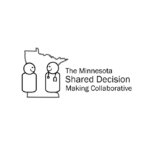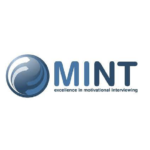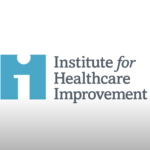What is cultural congruence?
Culturally congruent care is providing care to a patient while being aware and inclusive of their cultural values, beliefs, and practices. The first steps to providing culturally congruent care include identifying the diverse populations you are serving, learning more about their cultural practices, and adapting your approach to care to meet your patient’s needs.*
The resources below will help you to advance culturally responsive care in your practice:
- Explore Diversity in Minnesota Information Sheets
- Adopt a Patient-Centered Care Approach
- Explore Language Resources for Minnesota Health Care Providers
*Understanding the role culture plays in health care is essential. Still, patients are individuals – each person’s preferences, practices, and health outcomes are shaped by many factors, a concept known as intersectionality.
Explore Diversity in Minnesota Information Sheets
Cultural congruence is recognizing and understanding the role culture plays in health care and adapting care strategies to meet patient needs. Explore the Diversity in Minnesota Information Sheets to learn more about the background, religious and cultural beliefs, communication preferences, and common health issues of the predominant populations in Minnesota.
Adopt a Patient-Centered Care Approach
Understanding the role culture plays in health care is important. Still, patients are individuals – each person’s preferences, practices, and health outcomes are shaped by many factors (a concept known as intersectionality). Therefore, adopting a patient-centered care approach is essential. Many methods can help providers and organizations ensure patients are engaged in and at the center of all care decisions.
Understanding Motivational Interviewing
An overview of motivational interviewing explained by the Motivational Interviewing Network of Trainers (MINT). Explore the website for additional resources.
(Website)
 Minnesota Shared Decision-Making Collaborative
Minnesota Shared Decision-Making Collaborative
The Minnesota Shared Decision-Making Collaborative is a multi-stakeholder community learning collaborative working to remove barriers to adoption and promote the routine use of shared decision-making in clinical practice throughout Minnesota. (Website)
Ask Me 3: Good Questions for Your Good Health
An educational program from the Institute for Healthcare Improvement that encourages patients and families to ask specific questions of their providers to better understand their health conditions and what they need to do to stay healthy. (Website)
Language Resources for Minnesota Health Care Providers
This collection of resources is intended to provide the health care community with tools to improve their communication with individuals and families who speak a language other than English. HealthPartners and UCare collaborated to identify this sampling of language resources, including patient-facing communication tools and educational resources. There is a language resource available for each threshold language. Threshold languages are languages other than English spoken by 1,000 individuals based on U.S. Census data.
Information on languages available for each resource is listed in alphabetical order and in bold when available.
Last updated Aug. 2022
Resource type(s) available
Minnesota Department of Human Services (DHS) Limited English Proficiency (LEP) Resources
DHS has many resources available to improve access for people with Limited English Proficiency (LEP). Resources that could be especially helpful in a health care setting include:
- Notice of Rights to Language Assistance translated into the 75 languages listed below.
- “I need a language” interpreter cards in 15 languages (in bold below) allow the patient to indicate that they need an interpreter and what language they need. It’s important to recognize that this resource will only benefit individuals who speak and read the same language, which is not always the case.
- Interpreter posters in 15 languages (in bold below) let patients know that they are entitled to interpreter services and can be printed from the DHS website.
- Limited English Proficiency Notice of the public’s right to free language assistance if someone cannot speak or read English well. Available in 15 languages (in bold below).
| Afrikaans Albanian Amharic Arabic Armenian Bhutanese Bosnian Bulgarian Burmese Cebuano Chinese – Cantonese Chinese (Simplified) Chinese (Traditional | Chippewa – Ojibwe Creolized English Croatian Cutchi – aka Cutchi Swahili or Gujarati Czech Dakota – Sioux Danish Dari Dutch Estonian Farsi Finnish | French Gaelic German Greek (Modern) Hausa Hawaiian Hebrew Hindi Hmong Hungarian Icelandic Igbo Indonesian | Italian Japanese Karen Languages Khmer Korean Kurdish Lao Latvian Lingala Lithuanian Mongolian Nepali Norwegian | Oromo Pashto Polish Portuguese Romanian Russian Serbian Serbo-Croatian Sinhalese Slovak Slovenian Somali Spanish | Swahili Swedish Thai Tibetan Tigrinya Turkish Ukrainian Urdu Vietnamese Yiddish Yoruba |
Resource type(s) available
![]()
Exchange Multilingual Health Resources is a Minnesota-created and curated partnership to exchange information and resources about health communication and to share multilingual health materials. It includes:
- Background information and resources on areas that impact health outcomes such as culture, race, language, and literacy are available for the public.
- A Library of over 6,000 pieces of translated health education materials that is available to partner organizations with a registered username and password.
Resource type(s) available
![]()
Centers for Disease Control and Prevention (CDC) Resources in Languages Other than English
This website has CDC information that has been translated from English into 1,317 other languages, searchable by language. Some of the topics include information on immunizations, specific diseases, information for pregnant women, food safety, COVID information, and more.
Visit CDC en Español for a more extensive list of educational resources in Spanish.
Resource type(s) available
![]()
The federal government’s Limited English Proficiency site has many resources for translating materials, including
| Albanian Amharic Arabic Armenian Bengali Bosnian Burmese Chinese-Simplified | Chinese-Traditional Croatian Farsi French French Creole Greek Gujarati Haitian | Creole Hindi Hmong Igbo Italian Japanese Jamaican Creole Karen | Khmer Korean Kurdish Kru Lao Mien Nepali Polish | Portuguese Punjabi Romanian Russian Samoan Somali Spanish Sudanese | Tagalog Tigrinya Ukrainian Urdu Vietnamese Yiddish Yoruba |
Resource type(s) available
![]()
The Health Resources and Services Administration (HRSA) Culture, Language, and Health Literacy site contains cultural and linguistic competence resources, including for people with limited English proficiency.
Resource type(s) available
![]()
The MediBabble app is one example of a real-time communication tool that could be used in a medical setting to provide with non-English speakers.
Note: The language assistant resources mentioned above are for informational purposes only and are not endorsed or affiliated with HealthPartners nor UCare in any manner.
Resource type(s) available
![]()
These recorded webinars from LanguageLine Solutions cover topics including:
- Plain Language and Compliance for Public Sector Communication
- Ensuring Rights for People with Limited English Proficiency During COVID-19 and Beyond
- Patient Centered-Communication: The Joint Commission Standards and Resources for Ensuring Language Access
- ADA Title II: Understanding the Communication Responsibilities of State and Local Agencies
They also host webinars educating on using interpreters.
Note: The language assistant resources mentioned above are for informational purposes only and are not endorsed or affiliated with HealthPartners nor UCare in any manner.
Minnesota Department of Health Statewide Roster of Spoken Language Health Care Interpreters
The roster can be searched by language and geographic area. The results of the search list the interpreters’ contact information to determine the health care subject areas and specialty settings in which the interpreter may have work experience and their agency contact information if relevant.


